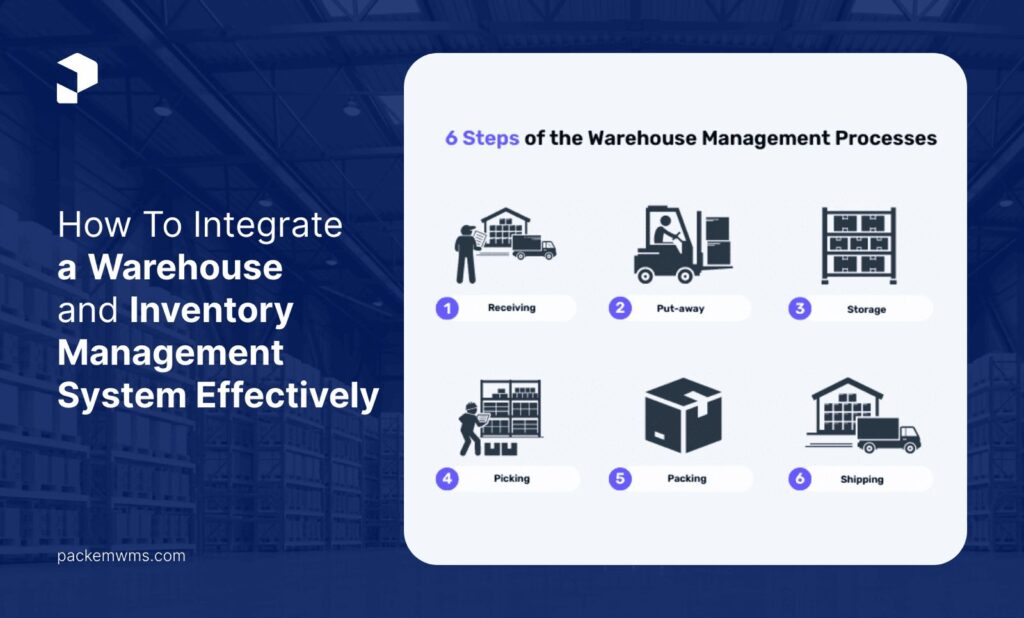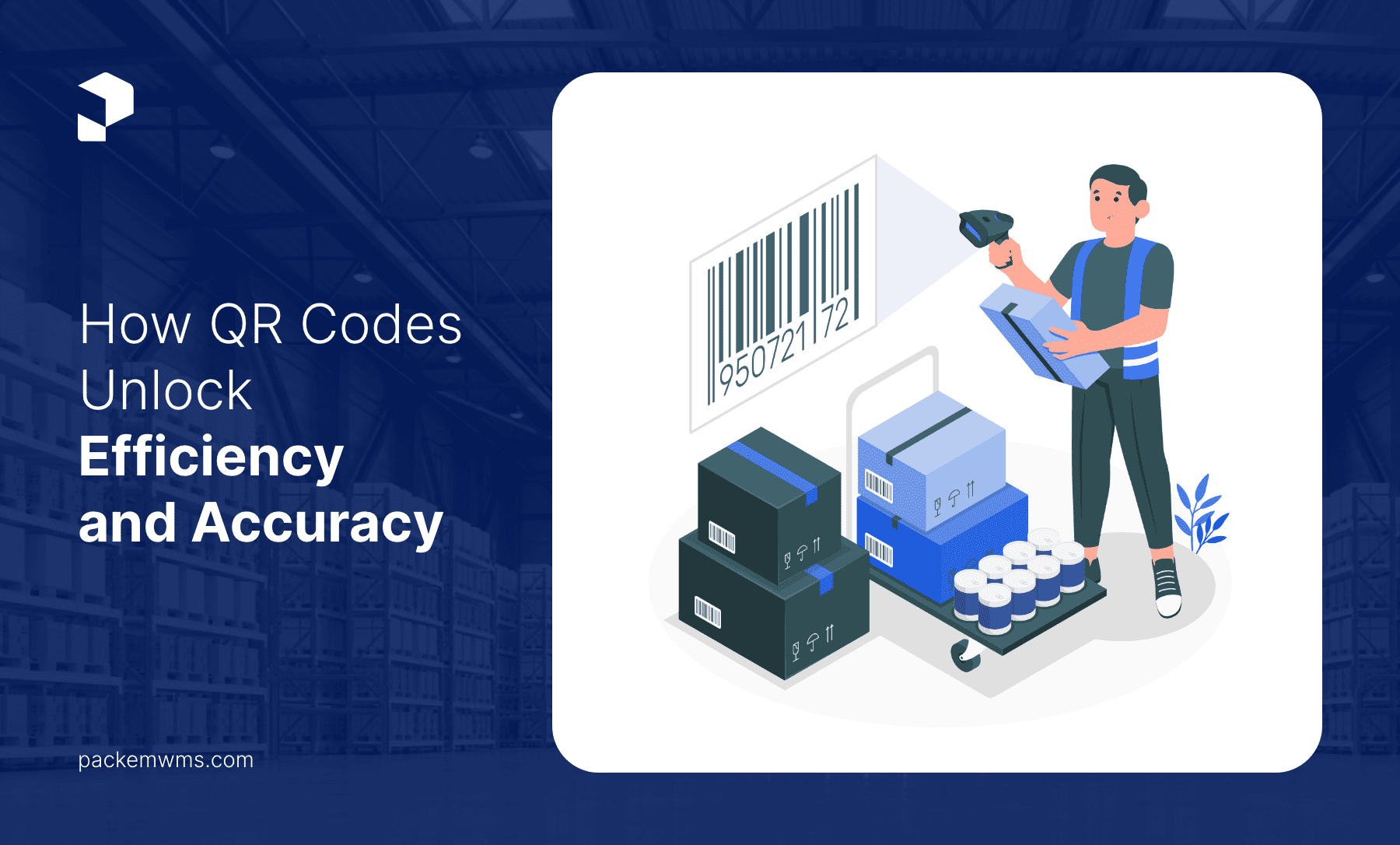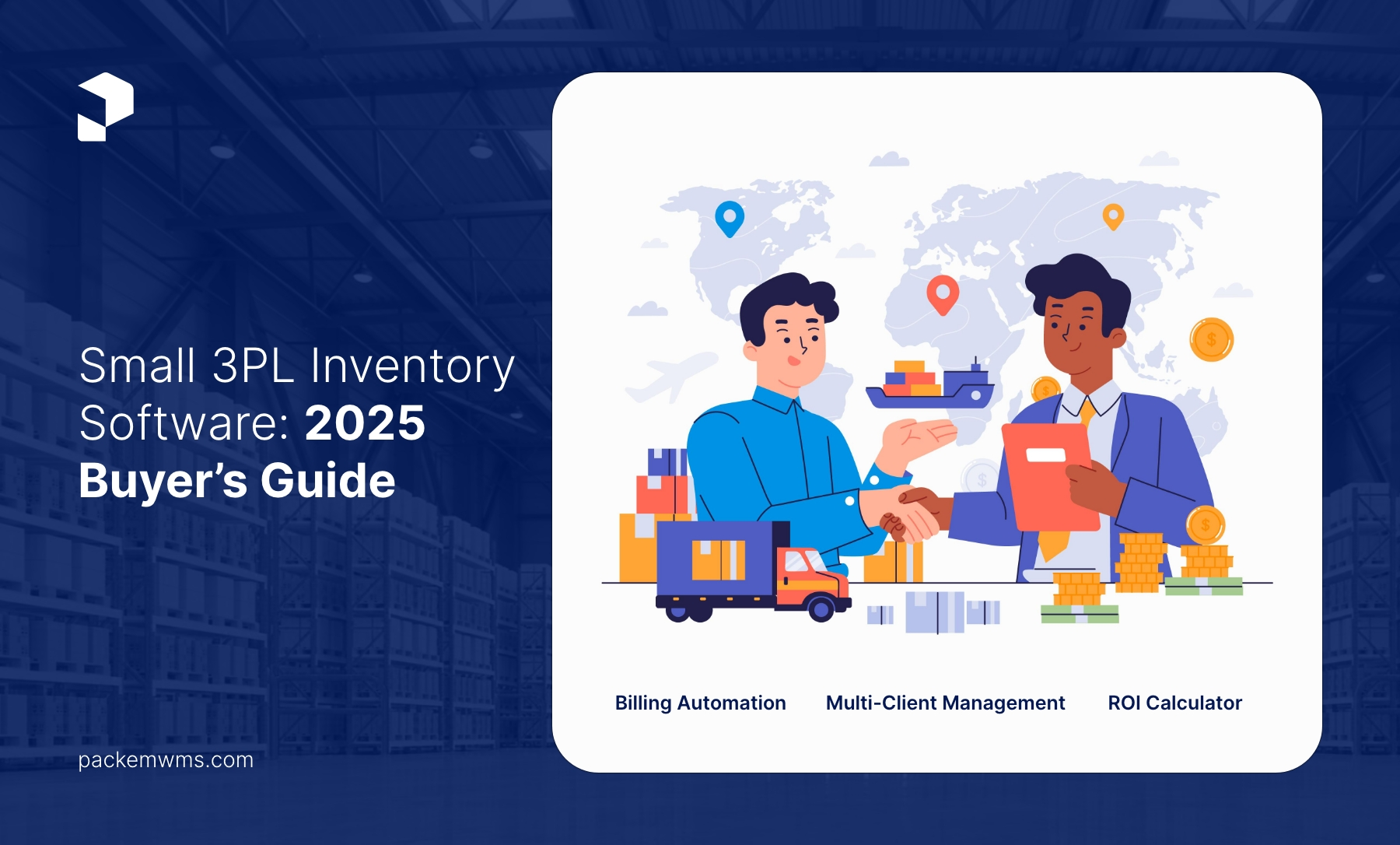Today, warehouse and inventory management system is essential in a fast-moving business world. It streamlines operations and boosts productivity. By integrating these systems properly, firms can keep precise inventory levels, enhance order fulfillment, and heighten supply chain efficiency.
This guide breaks down the integration process. It will give you practical insights and steps to effectively connect your warehouse and inventory management system. You will discover which features are vital, and address the usual challenges that can arise during integration.
Automation is important for improving warehouse processes. It increases speed and reliability, which are crucial. This article helps everyone, from small business owners to those in larger companies, to improve their warehouse and inventory management practices.
Benefits of Integrating a Warehouse and Inventory Management System
Integrating a warehouse and inventory management system boosts a business’s operational capabilities. A main benefit is that it automates inventory and order management. Automation streamline workflows. The system keep an updated inventory database, reducing manual entries.
This integration impact manual errors and lowers operational costs. With a solid system, firms can lessen mistakes like wrong order fulfillment or misplaced stock. This leads to fewer returns. Statistics show that integrated systems can cut operational costs by about 25% thanks to these efficiencies.
Another important benefit is improvement in inventory visibility and accuracy. Integrating warehouse systems offer real-time inventory tracking. This guarantees businesses possess current information. With better visibility, firms make smarter choices about stock levels and orders. Thus, they achieve a 30% improvement in inventory accuracy.
Moreover, customer satisfaction increases significantly with a warehouse and inventory management system. Timely order fulfillment ensures customers receive their products correctly. Better services create customer loyalty and potentially raise repeat business by approximately 20%.
Thus, bringing together a warehouse and inventory management system is not only about technology. It signifies a strategic step that enhances efficiency and aligns with the growth needs of today’s businesses.
Key Features to Look For in a Warehouse and Inventory Management System
Choosing a proper warehouse and inventory management system is crucial. Features should improve efficiency and precision. Below are key aspects found in effective warehouse and inventory management system.
Real-time inventory tracking matters a lot. It let businesses monitor stock levels right away. This feature cuts discrepancies between actual stock and recorded numbers, lowering mistakes when fulfilling orders.
Low stock alerts with automated restocking can help companies. When stock dips under a set level, the system automatically starts the reordering process. This way, customer demand gets met without keeping overly large inventory.
Connecting with other business applications is important. A warehouse and inventory management system should easily link to platforms like e-commerce sites, accounting software, and customer databases. This helps streamline operations and keeps data consistent.
Good reporting tools provide insight into turnover rates and fulfillment times. They help companies analyze their trends, predict needs, and make smart choices. These insights lead to better operational efficiency.
A simple user interface matters too. If a system is easy to use, staff can adapt quickly. Good design makes training easier for newcomers and boosts efficiency, allowing navigation through various functions.
Such features are vital for smooth warehouse operations and a strong warehouse and inventory management system. The next part will detail the steps to effectively integrate these systems, preparing you to enhance operational capabilities more effectively.
Steps for Effective Integration of a Warehouse and Inventory Management System
Integrating a warehouse and inventory management system greatly enhance operational efficiency. It is key for better accuracy in managing inventory. Below are steps for smooth integration.
Check current inventory practices for issues. Know how your old system works to find areas that require fixing. Look at data flow, stock levels, and how orders are filled to find slow spots and areas to improve.
Select a right WMS that suits company needs. The warehouse management system should match operational goals. Look for features such as real-time tracking and ability to scale for supporting growth.
Create a clear plan for implementation. A solid plan shows timeframes, needed resource, budget, and tasks divisions. This assures everyone knows their roles, which helps keep things on track during integration.
Take care of data transfer and ensure accurate information. Moving data from old to new system matters a lot. Make sure to check the data during transfer so there are no mistakes in inventory management. Clean data by removing duplicates before moving.
Provide extensive training on new system for staff. Training is essential for smooth adoption of the system. Offering sessions for staff to learn new features helps reduce push back and makes employees effective users of the system.
Watch how the system performs after integration. Once it’s in use, check the new system’s performance against goals. This will help spot difficulties or surprises early and allows for quick tweaks to enhance efficiency.
Following these steps lets businesses streamline their warehouse and inventory management system integration. It leads to better productivity and efficiency overall.

Common Challenges in Warehouse and Inventory Management System Integration
Integrating a warehouse and inventory management system boost operational efficiency. Yet, several challenges can emerge during implementation. Knowing these challenges helps ensure a smooth transition and gains from your system.
Data inaccuracy ranks first among challenges. It may lead to discrepancies and fulfillment problems. Manual entry mistakes or outdated info cause this issue. Misinformation leads to overstocking or stockouts. Customer satisfaction and operational effectiveness suffer.
Another issue is the lack of real-time visibility into inventory levels. Without fast access to accurate inventory data, firms find stock management difficult. This often delays order fulfillment, which misaligns with demand. A robust warehouse and inventory management system should give real-time updates.
Employee resistance is another roadblock. New systems require staff to change workflows and learn new steps. This can cause pushback or disengagement. Change management strategies need priority. They help staff accept the new system while realizing its benefits.
Integration issues with existing systems can hinder smooth transitions to warehouse and inventory management system. Legacy software may not work with modern solutions. This mismatch means more IT resources and longer timelines for custom solutions.
Underutilization of software features is another common concern. Companies may invest in advanced warehouse and inventory management systems yet fail to use all features. This typically comes from insufficient training or lack of awareness of capabilities in the system.
Addressing these challenges is key for successful integration. Proactive planning and adequate training play vital roles. They help minimize issues. A well integrated system leads to an efficient warehouse operation.
The Role of Automation in Managing Warehouse and Inventory Management System
Automation is crucial in this system. It addresses issues faced by manual processes. It cuts down on manual data entry, which then lowers human error. This error could cause incorrect stock levels and lead to expensive mistakes. Automated systems collect data reliably, keeping info current across platforms.
Automated solutions give businesses real-time tracking of inventory levels. This feature allows informed decisions. Managers can respond quickly to demand changes and find slow-moving products. They can also change purchasing strategies. Such agility helps maintain the best inventory levels.
Furthermore, automation tools can look at historical inventory levels. They analyze trends and provide insights that help manage stock. Using analytics, businesses can forecast demand and create inventory policies. This method reduces stockouts and overstocks while making good use of warehouse space.
As businesses face supply chain challenges, using automation is important. Companies that use automation effectively meet customer needs better. They increase service levels and enhance performance.
This illustrates how PackemWMS can improve warehouse management, leading to better efficiencies.
PackemWMS: A Comprehensive Solution for Warehouse Management
PackemWMS is a solid choice for firms looking to upgrade their warehouse and inventory management system. This software simplifies the whole process. It starts with receiving goods and ends with shipping them, ensuring smooth operations throughout.
PackemWMS has a strong set of features that accommodate businesses, big and small. Its tools allow for great inventory control, order management, and easy shipping integration. Such flexibility lets each organization personalize the solution, improving their warehouse functions.
This warehouse and inventory management system particularly suits retail and e-commerce. These sectors need quick order fulfillment and precise inventory counts. Advanced tech improves productivity, helping to cut costs in a tough marketplace where doing more with less is higher priority.
PackemWMS improves visibility into inventory levels, which is key for making sound decisions. Companies can see inventory status in real-time, adapt to demand, and control stock levels smartly, helping prevent stockouts or surplus items.
To get the most from a warehouse and inventory management system, integrating PackemWMS is vital for businesses aiming to enhance efficiency and tackle market challenges. Investing in this software allows firms to focus on growth, while it manages the details of inventory.
Conclusion
Integrating a warehouse and inventory management system boosts your supply chain efficiency. We explored the benefits of these systems. They improve accuracy and enhance visibility. Key features like real-time tracking streamline your processes. Choosing a suitable solution is vital.
A strong strategy ensures effective integration. Recognizing challenges and applying automation helps overcome issues. Tools like PackemWMS enhance your warehouse efficiency and control over inventory.
Now that you understand the integration of a warehouse and inventory management system, it’s time for action. Analyze current systems and find areas for improvement. The rewards from a successful integration are great. It sets up your business for success and growth. Accept change and see operations improve.
About PackemWMS
PackemWMS specializes in comprehensive warehouse management software designed to optimize operations for businesses of all sizes, offering features such as inventory control, order management, and shipping integration.
Enhancing efficiency and accuracy in supply chain processes, PackemWMS is essential for sectors like retail, e-commerce, manufacturing, and healthcare seeking scalable solutions to streamline warehouse logistics. Get started with PackemWMS today!



